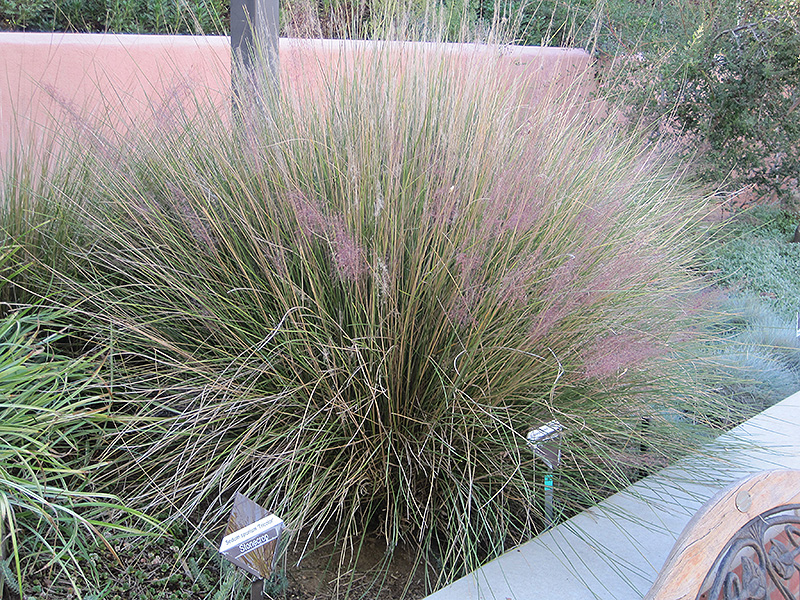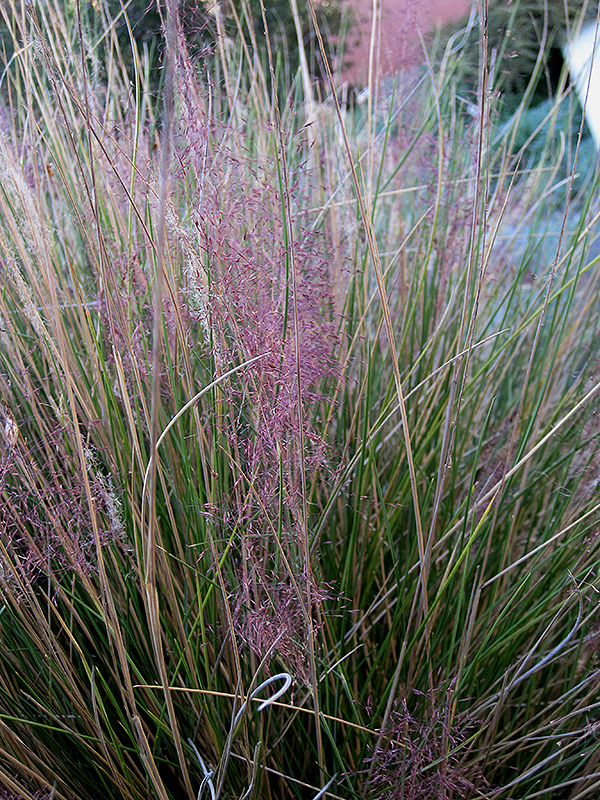Pink Muhly Grass Muhlenbergia capillaris 'Pink Muhly' Plant Height: 18 inches Flower Height: 3 feet Spread: 3 feet
Sunlight:
Hardiness Zone: 4b Other Names: Pink Muhlygrass, Gulf Muhly Description: A mounding grass with very fine dark green foliage; airy plumes of minute pink flowers in fall gives one a sense of pink fluffy clouds, that will eventually fade to tan seed pods in late fall and winter; breathtaking planted in masses Ornamental Features Pink Muhly Grass features airy plumes of pink flowers with rose overtones rising above the foliage from late summer to mid fall. The tan seed heads are carried on showy plumes displayed in abundance in late fall. Its grassy leaves remain dark green in color throughout the season. Landscape Attributes Pink Muhly Grass is a dense herbaceous perennial grass with an upright spreading habit of growth. Its relatively fine texture sets it apart from other garden plants with less refined foliage. This is a relatively low maintenance plant, and is best cleaned up in early spring before it resumes active growth for the season. Deer don't particularly care for this plant and will usually leave it alone in favor of tastier treats. It has no significant negative characteristics. Pink Muhly Grass is recommended for the following landscape applications; Planting & Growing Pink Muhly Grass will grow to be about 18 inches tall at maturity extending to 3 feet tall with the flowers, with a spread of 3 feet. It grows at a slow rate, and under ideal conditions can be expected to live for approximately 10 years. As an herbaceous perennial, this plant will usually die back to the crown each winter, and will regrow from the base each spring. Be careful not to disturb the crown in late winter when it may not be readily seen! This plant should only be grown in full sunlight. It prefers dry to average moisture levels with very well-drained soil, and will often die in standing water. It is considered to be drought-tolerant, and thus makes an ideal choice for a low-water garden or xeriscape application. It is particular about its soil conditions, with a strong preference for poor, acidic soils. It is somewhat tolerant of urban pollution. This is a selection of a native North American species. It can be propagated by division; however, as a cultivated variety, be aware that it may be subject to certain restrictions or prohibitions on propagation. Pink Muhly Grass is a fine choice for the garden, but it is also a good selection for planting in outdoor pots and containers. With its upright habit of growth, it is best suited for use as a 'thriller' in the 'spiller-thriller-filler' container combination; plant it near the center of the pot, surrounded by smaller plants and those that spill over the edges. Note that when growing plants in outdoor containers and baskets, they may require more frequent waterings than they would in the yard or garden.![]()
![]()
![]()
![]()
![]()
![]()
![]()
![]()
![]()
![]()
![]()
![]()
![]()
![]()
![]()
top of page
Louie's Nursery Menifee - Plant Finder
Characteristics
Applications
Features & Attributes
This tool is an online resource representing many of the varieties that we carry over the course of the season, and is intended for informational purposes only. Inventory varies seasonally, so we cannot guarantee that every plant will be in stock at all times - please contact the store directly for current availability. It does not include our entire selection of plants, so be sure to visit our store to see varieties that may not be represented on this list.
bottom of page

